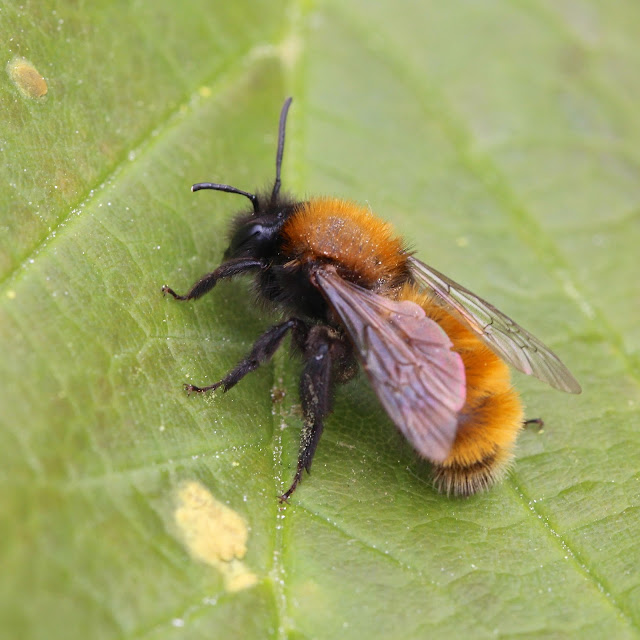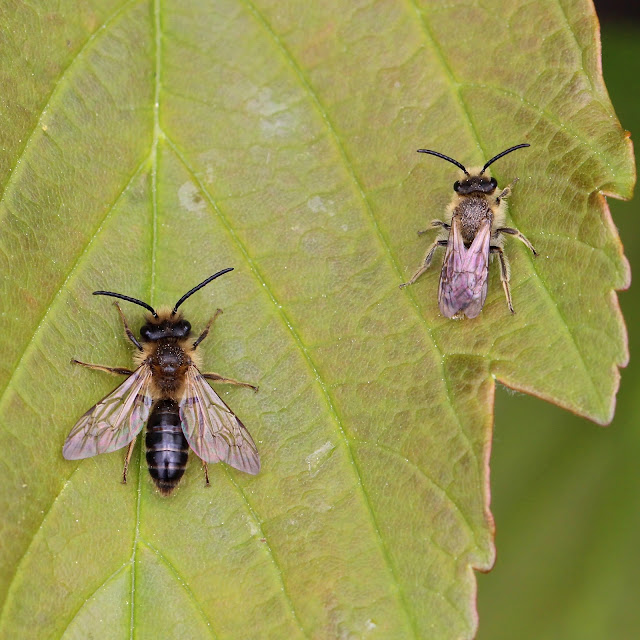On my latest visit to the Spetchells at Prudhoe I noticed a sycamore at the side of the chalk that was almost the only tree in full leaf. The leaves gave a perfect platform for the bees to take a quick break. The tree was also surrounded by flying male bees searching for females.
Here are a few of the female mining bees I saw on the tree. I know the names of some of them. This is an orange-tailed mining bee (Andrena haemorrhoa).
A tawny mining bee (Andrena fulva).
A buffish mining bee (Andrena nigroaenea).
Possibly a Halictus bee (correction, Louise tells me it is a lasioglossum).
And here are a few males, probably all Andrena mining bees..
This is a male ashy mining bee (Andrena cineraria). There were also females around but none stopped on the tree while I was watching.
I also noticed these two nomad bees. Judging by the number of segments in the antennae I think both are male. Nomads are cuckoo bees so the females have less work to do - they spend their time searching for unguarded mining bee nests in which to lay their eggs, perhaps explaining why so few stopped for a rest on the tree. I think this one is Nomada goodeniana.
And this might be Nomada marshamella.
There were a few other bees, including some very small ones, that didn't stop long enough to have their photos taken. I'll be back there soon for another look.













No comments:
Post a Comment